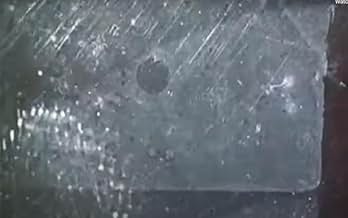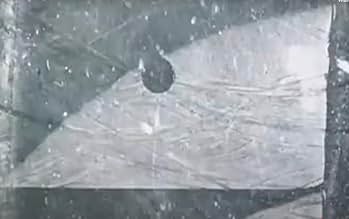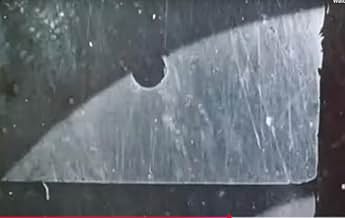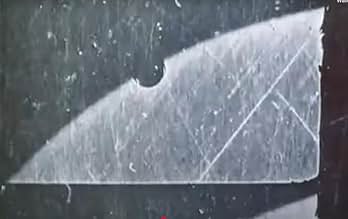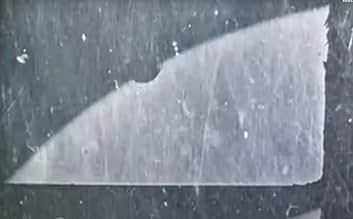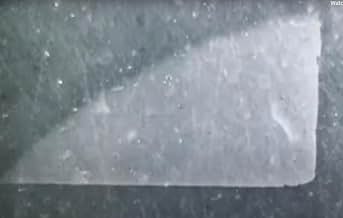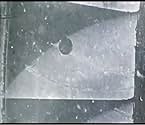Passage de Venus
- 1874
- 1 min
AVALIAÇÃO DA IMDb
6,8/10
2,4 mil
SUA AVALIAÇÃO
Cronofotografia inicial do trânsito de Vénus de 1874, capturada por Jules Janssen no Japão usando seu "revólver fotográfico" para pesquisa científica.Cronofotografia inicial do trânsito de Vénus de 1874, capturada por Jules Janssen no Japão usando seu "revólver fotográfico" para pesquisa científica.Cronofotografia inicial do trânsito de Vénus de 1874, capturada por Jules Janssen no Japão usando seu "revólver fotográfico" para pesquisa científica.
- Direção
Avaliações em destaque
OR IS IT?
It is true that this is the very first sequential photographic series put to motion ever produced, there is an elephant in the room that needs to be addressed. The tragedy is that this is not actually the heavenly body of Venus passing before the great burning day ball in the sky. It is in fact, the world's first screen test, as these are only models, placeholders made to test the plates which would be used for the real deal. Regrettably, the actual footage of the Venusian transit may be lost forever. According to Wikipedia, "A 2005 study of the surviving material concluded that all the extant plates made with the photographic revolver are practice plates shot with a model and that none of the many plates successfully exposed during the eclipse seem to have survived."
Yet we must interpret it as it is: A film. Indeed, it is fitting that man's first foray into something so invariably groundbreaking in influence, cultural impact and importance to art as film is indeed, baby steps, waddling up towards the stars. Or at least, the pretend ones spinning above the nascent medium's crib in its nursery. If we play along with this vision, we cannot help but be in awe of man's great scope for this technology's use, to chart astrological and scientific phenomena, to revolutionize the preservation of once in a lifetime events, and indeed attain near-apotheosis in achieving the ability to preserve, simulate and replay life itself as long as the powers and mediums employed would hold. It is staggering in and of itself that this alone survived into the age where it could be immortalized nearly forever, to inspire every generation with proof that even in simulacra, man has always been driven to achievement by gazing upon the wonders within the stars.
It is true that this is the very first sequential photographic series put to motion ever produced, there is an elephant in the room that needs to be addressed. The tragedy is that this is not actually the heavenly body of Venus passing before the great burning day ball in the sky. It is in fact, the world's first screen test, as these are only models, placeholders made to test the plates which would be used for the real deal. Regrettably, the actual footage of the Venusian transit may be lost forever. According to Wikipedia, "A 2005 study of the surviving material concluded that all the extant plates made with the photographic revolver are practice plates shot with a model and that none of the many plates successfully exposed during the eclipse seem to have survived."
Yet we must interpret it as it is: A film. Indeed, it is fitting that man's first foray into something so invariably groundbreaking in influence, cultural impact and importance to art as film is indeed, baby steps, waddling up towards the stars. Or at least, the pretend ones spinning above the nascent medium's crib in its nursery. If we play along with this vision, we cannot help but be in awe of man's great scope for this technology's use, to chart astrological and scientific phenomena, to revolutionize the preservation of once in a lifetime events, and indeed attain near-apotheosis in achieving the ability to preserve, simulate and replay life itself as long as the powers and mediums employed would hold. It is staggering in and of itself that this alone survived into the age where it could be immortalized nearly forever, to inspire every generation with proof that even in simulacra, man has always been driven to achievement by gazing upon the wonders within the stars.
This film won every award at the 1874 Oscars.
The very first moving picture was of the planet Venus.... taken from a time when we though every planet in the solar system could contain life... the person who filmed this must have wondered if anything was looking back at him from Venus....
The very first moving picture was of the planet Venus.... taken from a time when we though every planet in the solar system could contain life... the person who filmed this must have wondered if anything was looking back at him from Venus....
I don't believe it can be considered a film in the full sense of the term. The fact that it is probably the oldest fragment of cinema we know of does not make this product definable as a "film." Its entirely scientific and non-entertainment purpose alone would be enough to eliminate any debate. Moreover, there is the fact that this product was not recorded on film but on a series of different photographic plates.
However, it is not possible to overlook the historical importance of this product, nor the influence of the photographic revolver designed by Janssen, which made it possible to capture this event. Nevertheless, both reviews and evaluations should refer to film, not to artifact.
Rating: NC.
However, it is not possible to overlook the historical importance of this product, nor the influence of the photographic revolver designed by Janssen, which made it possible to capture this event. Nevertheless, both reviews and evaluations should refer to film, not to artifact.
Rating: NC.
This hits hard
the way venus transits across the sun just hits very different nowadays and i can't believe that this was only 5 seconds and deserves to be way longer.
the way venus transits across the sun just hits very different nowadays and i can't believe that this was only 5 seconds and deserves to be way longer.
This is probably the oldest film on IMDB.
Whether this is a film or not, it's hard to say, as this is 6 seconds of images put together. This technique may have been performed before by other men, but this is the oldest record we have. The initial intentions were not to catch movement for its own sake, but multiple shots were required because you were unable to specify the exact time of the Venus passing in the sky. It still makes me think, though, how far we have come 145 years later. It brings a combination of joy and sadness to see these images, it makes me wonder what was that day in Jules Janssen's mind. When listening to Alexander Graham Bell capturing his own voice, projecting to the future, this set of pictures makes you feel like history was made on that very day.
Você sabia?
- CuriosidadesThe oldest movie listed on IMDb.
- ConexõesFeatured in The Origins of Scientific Cinematography: The Pioneers (1990)
Principais escolhas
Faça login para avaliar e ver a lista de recomendações personalizadas
Detalhes
- Data de lançamento
- País de origem
- Idioma
- Também conhecido como
- Transit of Venus
- Locações de filme
- Japão(entire film)
- Consulte mais créditos da empresa na IMDbPro
- Tempo de duração1 minuto
- Cor
- Mixagem de som
- Proporção
- 1.33 : 1
Contribua para esta página
Sugerir uma alteração ou adicionar conteúdo ausente

Principal brecha
By what name was Passage de Venus (1874) officially released in Japan in Japanese?
Responda
